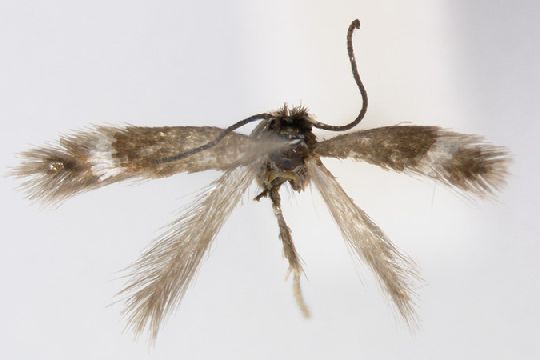

 +1Kontinente:EU
+1Kontinente:EU2. Diagnose
2.1. Männchen
3. Biologie
3.1. Nahrung der Raupe
Noch unbekannt! Tokár et al. (2017) vermuten stark, dass die Art - wie die verwandte Stigmella dryadella - als Raupe an Dryas octopetala lebt.
4. Weitere Informationen
4.1. Etymologie (Namenserklärung)
Tokár et al. (2017) teilen mit: "The specific name tatrica, an adjective, is derived from the Tatra Mts, where the new species was discovered."
4.2. Faunistik
Die Art war zunächst nur von der westlichen und östlichen Tatra in der Slowakei bekannt, wo die Falter Ende Juli/ Anfang August in den Hochlagen oberhalb der Waldgrenze um Dryas octopetala fliegen. Tokár et al. (2017) schreiben aber dazu: "The discovery of Stigmella tatrica shows that the montane fauna of Central European Nepticulidae is still insufficiently studied and can provide surprises. We expect that S. tatrica can also be found in the Polish part of the Tatra and other parts of the Carpathians, e.g. in Romania; currently it seems to be an endemic species for the Carpathians."
Völlig überraschend konnten Haslberger & Hausmann (2021: 54) über den Erstnachweis der Art in Bayern, in Deutschland und in den gesamten Alpen berichten. Gefunden wurden 2018 in zwei verschiedenen Malaisefallen auf dem Zugspitz-Platt insgesamt 6 Falter in 1965 bzw. 2005 m an der oberen Verbreitungsgrenze des Latschengebüschs.
4.3. Typenmaterial
Zur Typenserie ist bei Tokár et al. (2017) zu erfahren: "Holotype: ♂, pinned, with genitalia in glycerol in a small plastic vial. Original labels: “Slovakia, Belianske Tatry, Zadné Jatky, 1950–2010 m, 49°14.18’N; 20°13.50’E, 30.vii.2016, Zdenko Tokár leg.”, “HOLOTYPE Stigmella tatrica Tokár, Laštůvka & van Nieukerken” (red label), coll. Z. Tokár (to be deposited in the Central Slovakia Museum Banská Bystrica).
Paratypes: 14♂, 2♀, same locality and data as holotype, Gp. ZT ♂ 12873–5, 12878, 12918, ♀ 12876, ZT leg., coll. ZT & AL; 1♂, František Kuraj leg. & coll.; same locality as holotype, 2.viii.2014, 2♂, Gp. ZT 12266–7, ZT leg., coll. RMNH, DNA samples Tokar 12266, 12267; Belianske Tatry, Bujačí Vrch, 49°13.48’N; 20°15.55’E, 4.viii.2011, 2♂, Ignác Richter leg. & coll.; Západné Tatry, Červené Vrchy, Stoly-Temniak, 49°13.28’N; 19°54.19’E, 29.vii.2005, 3♂, Gp. ZT 9085, 9087, 9132, ZT leg., coll. AL, DNA samples RMNH.5012163, RMNH.5012164 (DNA extracts in RMNH); 1♂, Gp. Richter 9847, Ignác Richter leg. & coll. All paratypes with red label “PARATYPE Stigmella tatrica Tokár, Laštůvka & van Nieukerken”."
(Autor: Erwin Rennwald)
4.4. Literatur
- Haslberger, A. & A. Hausmann (2021): Insektenforschung "auf höchstem Niveau": Die Schmetterlinge der Zugspitze. — Nachrichtenblatt bayerischer Entomologen, 70 (1/2): 49-71.
- Erstbeschreibung: Tokár, Z., Laštůvka, A. & E.J. van Nieukerken (2017): A new pygmy leafmining moth, Stigmella tatrica sp. n., from the alpine zone of the Tatra Mountains (Lepidoptera, Nepticulidae). — Nota lepidopterologica 40 (1): 131-140 (13 Jun 2017). [https://doi.org/10.3897/nl.40.12674] [Zugang zur Arbeit bei pensoft.net]




